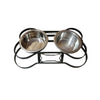Have you ever wondered how many teeth do cats have? Cats have 2 sets of teeth during their lifetime, milk teeth which are later replaced by permanent teeth.
In the beginning phase of life, adorable kittens have 26 baby teeth that are also known as milk teeth and adult cats possess a total of 30 teeth. At approximately 4 months of age, cats start to lose their baby teeth. Permanent teeth gradually start to replace milk teeth and they completely take over in just 6 months. This is the period when a cat is supposed to reach adulthood. The permanent teeth are undoubtedly stronger and more durable than the milk teeth.
How Many Teeth Do Cats Have in the Front?

A lot of people get curious about how many teeth do cats have in the front, Both kittens and adult cats have 12 incisor teeth in front along with 4 canines. 6 incisors are located on the top jaw and 6 on the bottom jaw.
Similarly, 2 canines are located on the top jaw and two on the bottom jaw. Incisors are used for grasping any object or when the cats want to groom themselves. Canines are used for holding prey or tearing them apart. Have you seen pointed teeth when a cat opens its mouth? Those are canines, also known as fangs.
How Many Teeth Do Kittens Have?

As discussed earlier, kittens have 26 deciduous teeth. Among these 26 baby teeth, there are 12 incisors, 4 canines and 10 premolars. These teeth are not as strong as permanent teeth that completely replace this set within 6 months. With the help of incisors, biting and tearing the food into small pieces becomes easier for kittens. They do not just grasp and tear food with these small sharp incisors but they also come in handy when they want to groom themselves.
As discussed earlier, canines are long and pointed teeth used for grasping a running prey, for example, rats. Premolars are flat surfaced teeth behind the canines. When kittens hold and tear food with the help of incisors and canines, premolars help them in chewing and grinding the meal into smaller pieces. Solid food can be processed with the help of premolars once it is teared.
Are Kittens Born With Teeth?
If you are someone who has already taken in a cat or is considering adopting one, it's natural to have some curiosity about their overall anatomy. Are kittens born with teeth? These are the questions that ring in everybody’s mind. Kittens are born without even a single tooth but remain cute, much like our own babies.
When your kitten turns around 3 or 4 months of age, their milk teeth gradually start to get replaced with permanent teeth. You may start to see some kitten teething symptoms during this period like increased chewing behavior, decreased appetite, excessive drooling, gum swelling and redness, blood on toys or chews, and restlessness. Kitten teething symptoms are perfectly normal around this age, you don’t need to panic or worry about your kitten when these symptoms begin to show.
What are the 4 Types of Cat Teeth and What They Do?

A small adorable kitten has 3 sets of cat teeth including incisors, canine, and premolars but a fully grown-up cat has 4 types of cat teeth. Want to know about the 4 types of cat teeth and what they do? Let’s dive right into it! There are 12 incisors, 4 canines, 10 premolars and 4 molars.
1. Incisors: Small pointy teeth known as incisors can help in holding and tearing of food.
2. Canines: Canines are longer and more pointy than incisors but basically have the same function, both incisors and canine are in the front.
3. Premolars: There are 10 premolars located behind the canines that help in shearing and cutting the food.
4. Molars: 4 molars are positioned at the back of the mouth, they are used for grinding and chewing the meal.
How to Care for a Cat’s Teeth?
You already have so much information regarding how many teeth a cat has but the crucial knowledge for you is about how to care for a cat’s teeth. Here are some tips:
Brush the teeth of your cat with a soft-bristled toothbrush to prevent the accumulation of plaque and tartar. Don’t use just any random toothpaste for cats, always use specific toothpastes that are formulated for cats and recommended by veterinarians.
Sometimes brushing your cat’s teeth might be a little hectic. Sometimes our lovely pets are not just in the right mood and you might not want to force them so How to Clean Cat’s Teeth Without Brushing? Just offer them dental treats or chews. These are not just delicious rewards for your cat, but they also help in reducing the accumulation of plaque and tartar. You may also try water additives to reduce the risk of dental problems in the cats.
Taking care of the dental health of cats also includes their diet. You just need to avoid excessive amounts of sugar or human meals in their diet as these may contribute to the deterioration of the dental health of your cat. There are special dental diets that you can feed your cat to take care of their oral health. The special texture and formulation of such diets help in reducing plaque and tartar buildup.
Last but not least, if the dental health of your cat is deteriorating even after going through all the options, just schedule routine dental checkups with your veterinarian. This way, you can get access to the root cause of the problem. The vet may perform professional cleanings, if required, and also address if there are any dental concerns.
Now you know all about how many teeth do cats have and how to care for a cat’s teeth, you can start monitoring the habits of your cat and consult with a vet about her regular dental checkups. Petyupp has all the Pet Supplies your cat needs for building strong dental habits.





Leave a comment